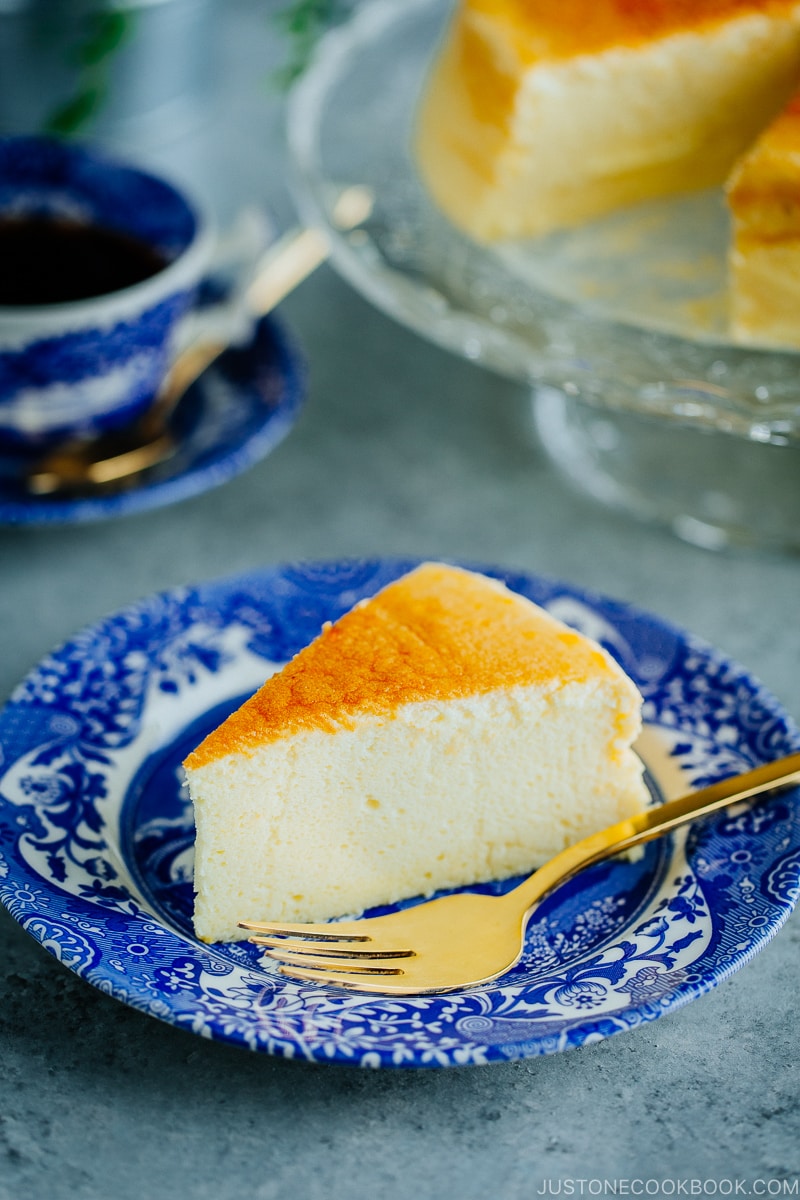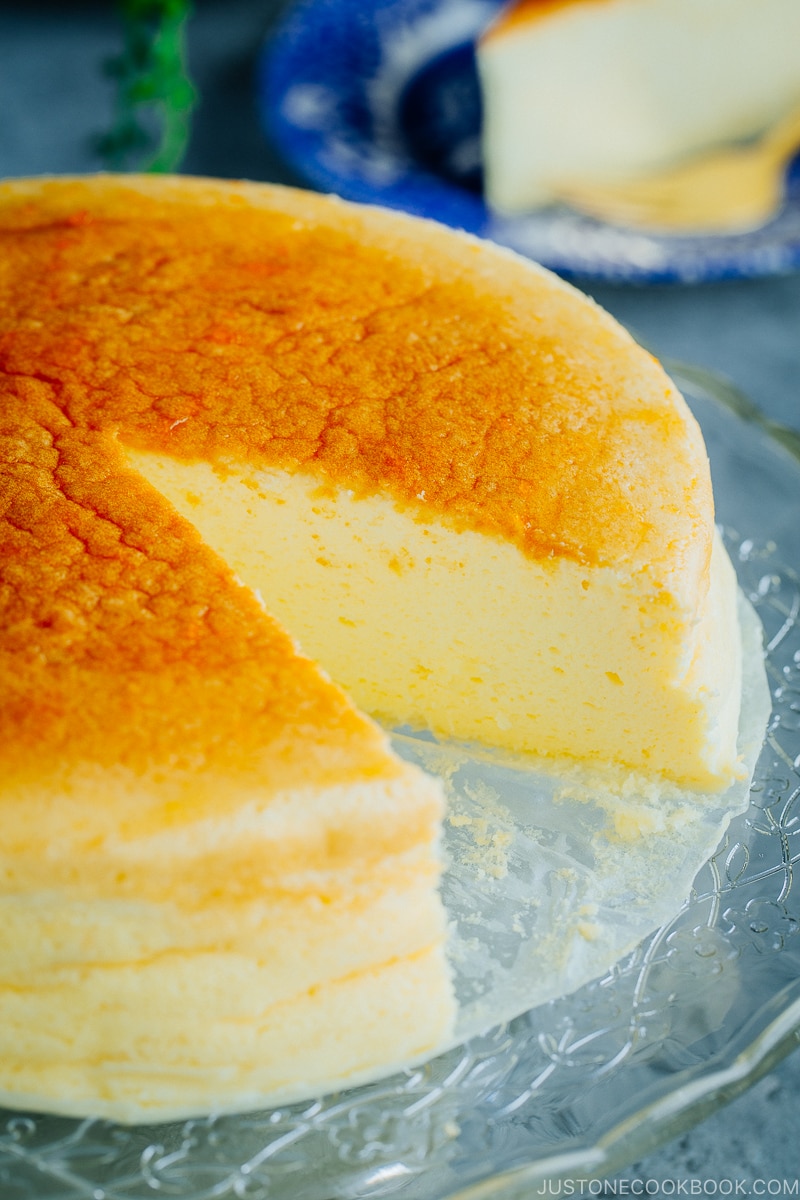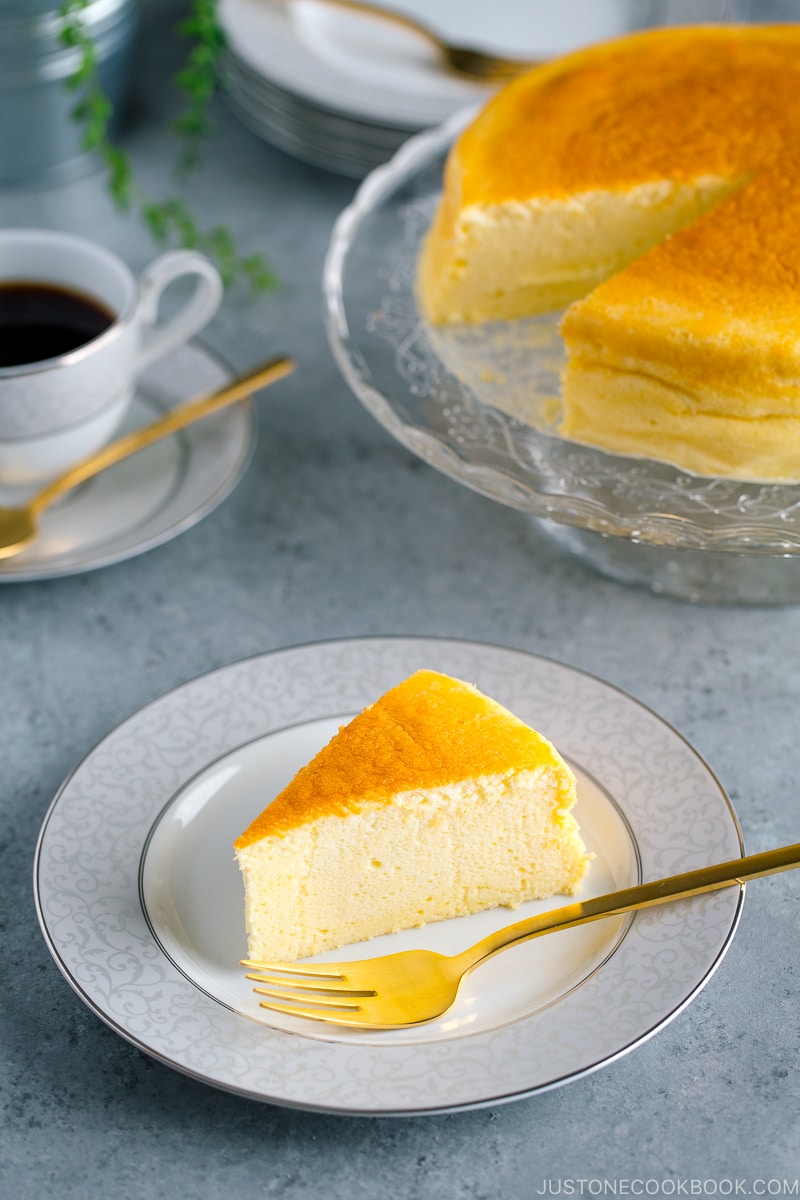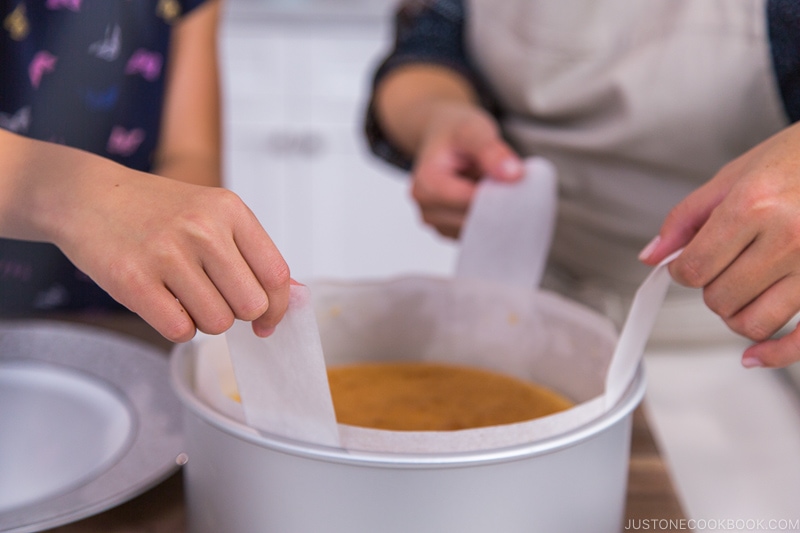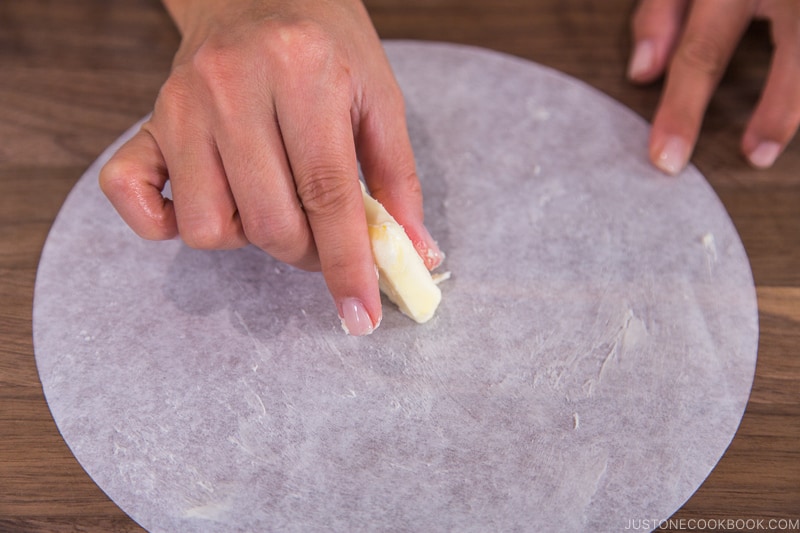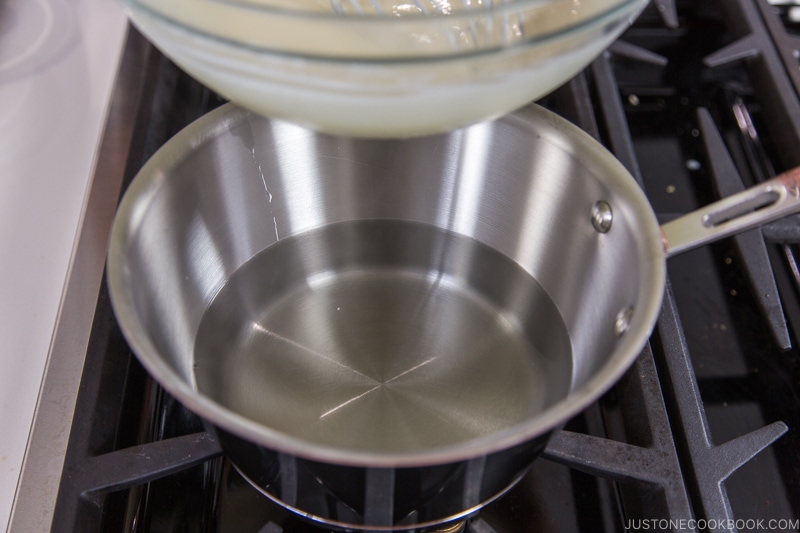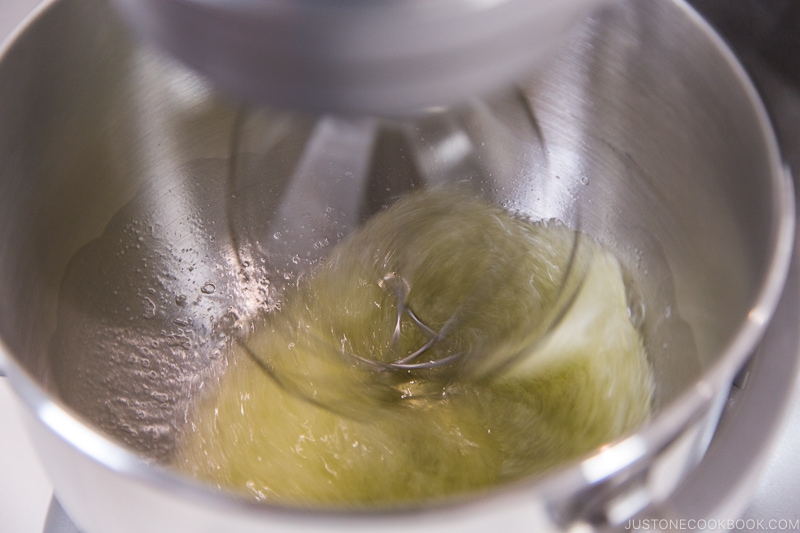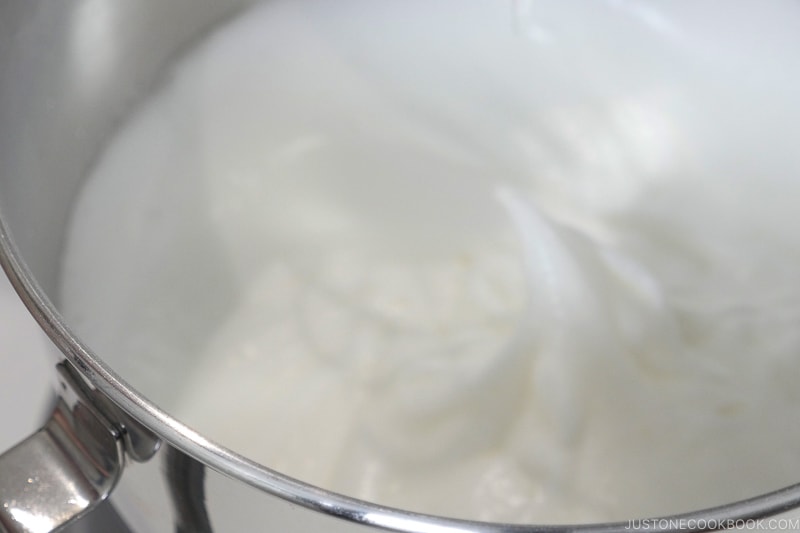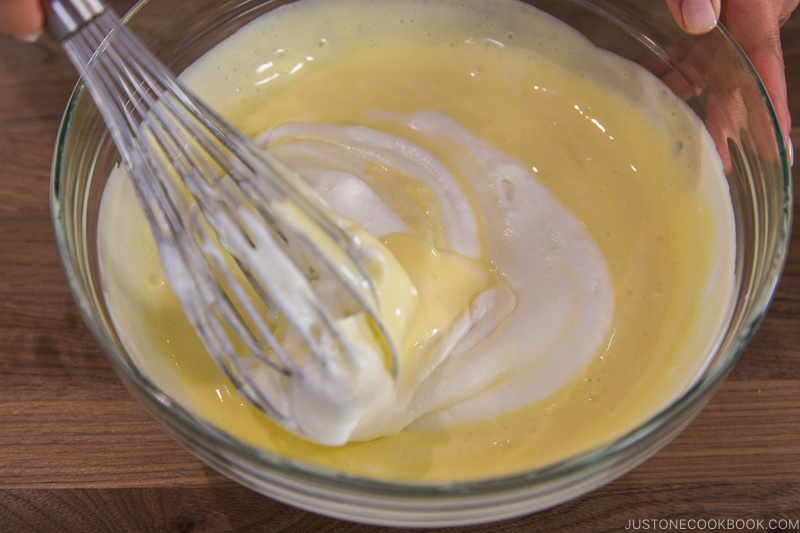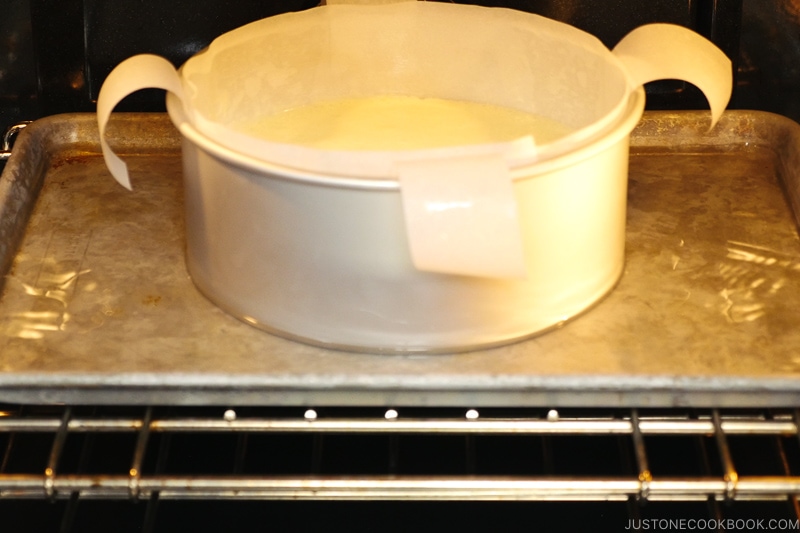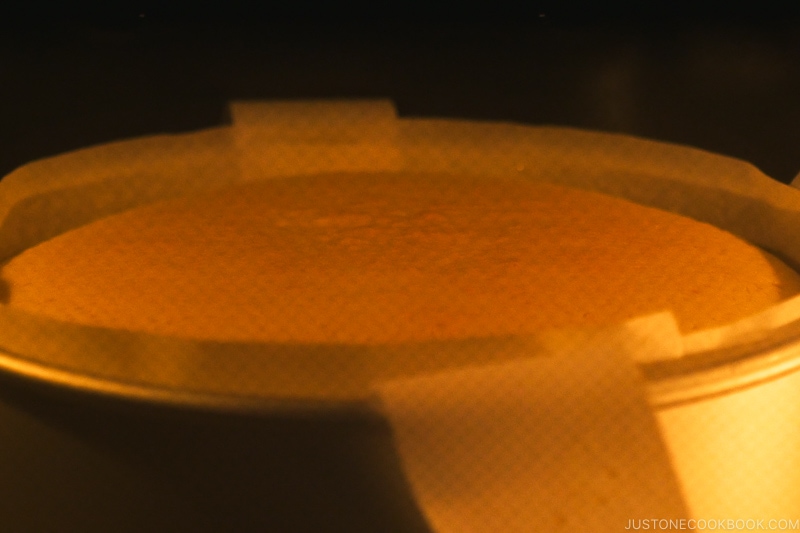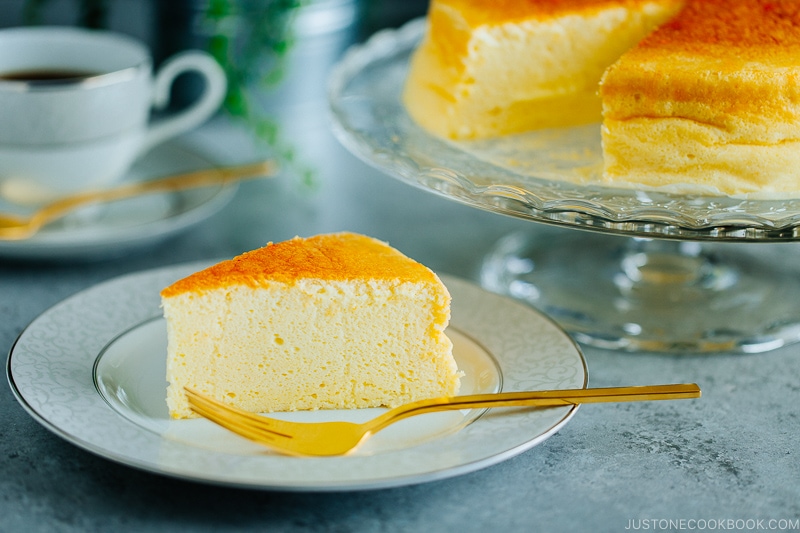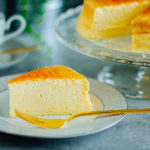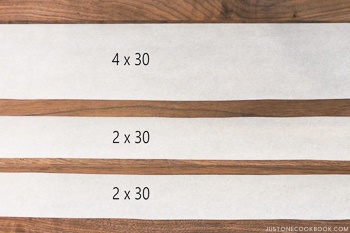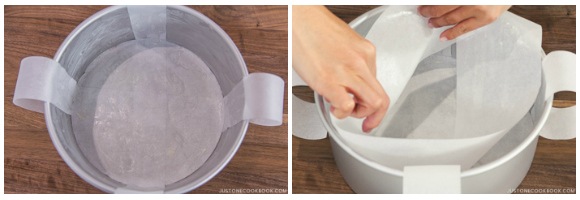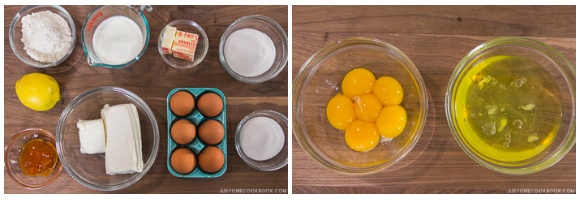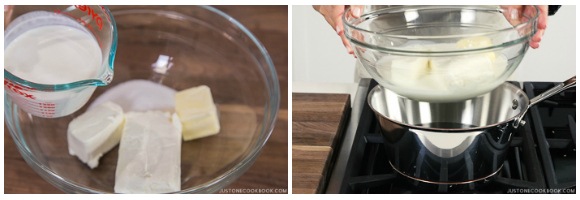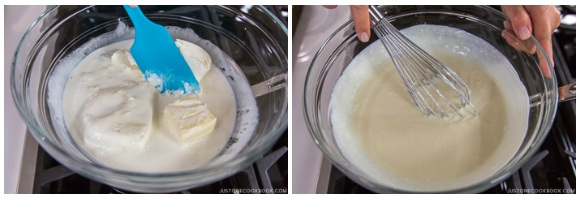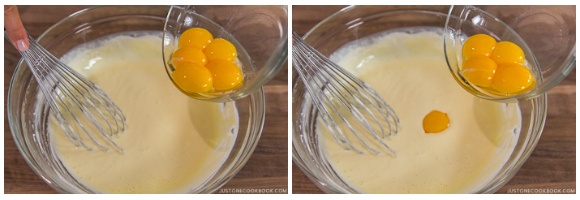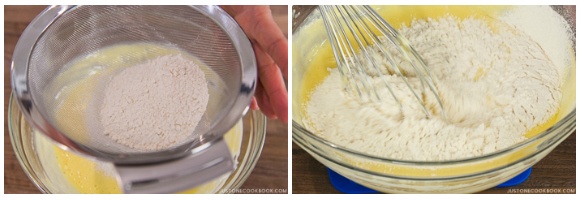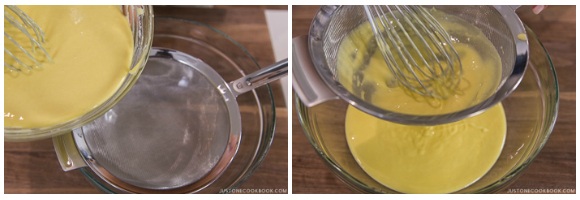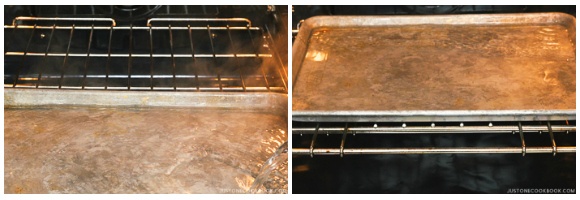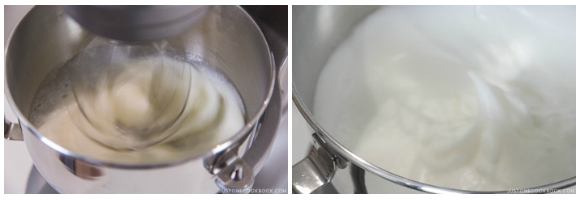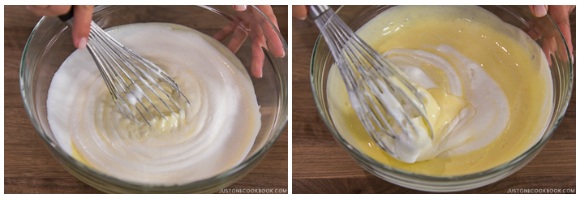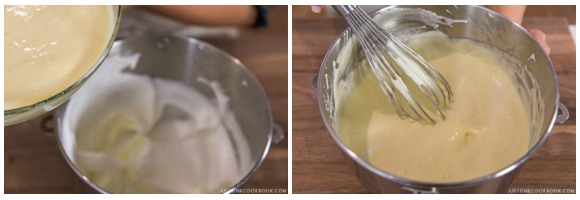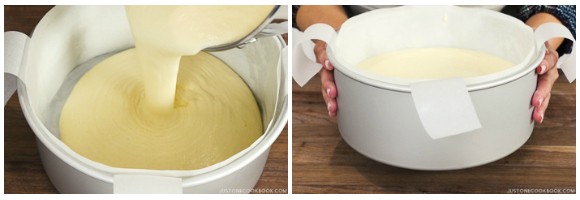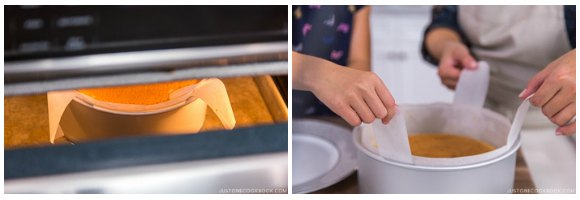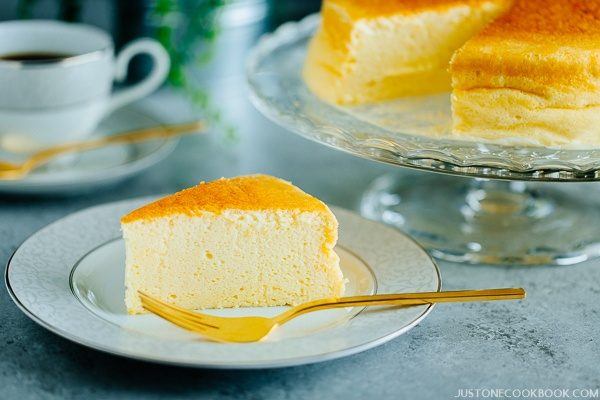Japanese cheesecake (also goes by soufflé cheesecake) is a glorious dessert known for its ultra-creamy, super luxurious, slightly tangy flavor and airy, soufflé-like character. It has swept the food world by storm and almost every dessert fanatic goes wild for it. Why is it so popular? What’s the difference between Japanese cheesecake and regular cheesecake? For a start, I think it has the ideal texture that appeals to everyone. With elements of both a rich velvety custard and a cottony sponge cake, the dessert simply hits all the right notes. It is not heavy and a lot less sweet than typical Western-style cheesecakes. Even those who are not into cheesecake will fall head over heels for this delicious treat. Here, I’ll show you how to make the best Japanese cheesecake and we’ll cover these topics:
What (exactly) is Japanese cheesecake A little background on cheesecakes in Japan Ingredients & equipment you’ll need Helpful tips & tricks
The recipe, while having several different steps, is simple enough to execute. Let’s get started!
What is Japanese Cheesecake?
This particular Japanese cheesecake recipe is a soufflé-style cheesecake that incorporates whipped egg whites in the cake mixture and is baked in a bain-marie (water bath), which results in its characteristically light and fluffy texture. Yes, it is basically the cheesecake version of the Japanese soufflé pancakes! As there are a few varieties of cheesecakes in Japan, we call this cheese soufflé or soufflé cheesecake. Outside of Japan, however, it becomes synonymous with the generic “Japanese cheesecake”. Because of its unique texture, it is also called jiggly cake or Japanese cotton cheesecake. I agree, that’s a lot of names for a cheesecake!
Cheesecakes in Japan
While this has become the de facto ‘Japanese cheesecake’, I do want to mention that there are 3 main types of cheesecakes available in Japan:
Baked cheesecake (ベイクドチーズケーキ) Rare cheesecake (レアチーズケーキ) Soufflé cheesecake (スフレチーズケーキ)
Baked cheesecake is the typical cheesecake. It has eggs, cream cheese, heavy cream, and flour and it’s baked in the oven. Some may have a biscuit crust on the bottom, and some don’t. Rare cheesecake is the “no-bake cheesecake”. The cream cheese and heavy cream are mixed with gelatin or lemon juice, then poured over the biscuit crust, and cooled to set inside the refrigerator. Eggs are not used in this version. This type of cheesecake is often served with berries or other types of fruits. Soufflé Cheesecake is the one we’re making today and originated in Japan. The technique is created by Yasui Juichi (安井寿一), a pastry chef at the patisserie of the Plaza Hotel.
How to Make the Best Japanese Cheesecake
Ingredients You’ll Need
First, let’s go over the ingredients and equipment you will need to make this amazing cheesecake. I wrote this section so it’s helpful for beginner bakers. If you bake often, please skip this section.
- Unsalted butter: When a baking recipe calls for unsalted butter or is written as just “butter”, that means the salt is not required. As baking is chemistry, I recommend using only unsalted butter.
- Eggs: An American large egg is about 50 grams without shell (56.7 g with shell).
- Cream Cheese: Buy two Philadelphia Original Cream Cheese 8 oz. boxes instead of the round container type. You will need one full box (8 oz.) and 2.5 oz. from the second box (there is the measurement on the package in case you don’t have a kitchen scale).
- Heavy (Whipping) Cream: Heavy cream or heavy whipping cream is the richest type of liquid cream with a fat content of at least 36%. You can also go light and use whole milk in this recipe.
- Granulated Sugar: I often receive questions about sugar whether you can use a substitute or reduce the amount of sugar. As I mentioned before, the amount of sugar affects the baking results. My recommendation is to follow the recipe first before adapting so you will know what works and what not. I use regular white granulated sugar for my baking unless stated otherwise.
- Cake Flour: I use the King Arthur cake flour blend, but if you don’t have the cake flour in hand, you can always make it yourself. All you need is all-purpose flour and corn starch. To get 1 cup cake flour, take one level cup of all-purpose flour, remove 2 tablespoons, then add 2 tablespoons of corn starch back in, and sift to combine.
- Lemon: To me, it’s important to include the lemon juice for a touch of tanginess and the zest for the fragrance.
- Apricot Jam: Typical soufflé cheesecake is covered with apricot jam. It gives the right amount of tanginess and sweetness as well as a shiny sheer on the cake. I highly recommend getting a jar (my favorite brand is Bonne Maman).
Equipment You’ll Need
- Cake Pan: I use this 9-inch cake pan with a 4-inch height. If your 9-inch cake pan is not 4-inch tall, you can still use it with parchment paper to support the rising cake. If you have a smaller or bigger cake pan, please adjust your ingredients as I used one egg as a unit of calculation.
1 large egg (50 g without shell) 50 g cream cheese 10 g unsalted butter 33 g (33 ml) heavy whipping cream 10 g granulated sugar 13 g cake flour 1 tsp. lemon juice + some zest 17 g granulated sugar for beating egg whites
I used to use a springform pan for my soufflé cheesecake, and most of the time I didn’t have any water seepage issues (I used a heavy-duty 8″ long aluminum foil to secure). However, I discovered a better solution (read below) with this new cake pan, so now I don’t use my springform pan for making this cheesecake. 2. Parchment Paper: You will need to pull out 30 inches of parchment paper. You will need one 30″ x 4″ (height of cake pan) sheet, and two 30″ x 2″ strips which are used to lift up the cake. To save time, I recommend this 9-inch round parchment paper liner for the bottom of the cake. 3. Mixing Bowls: You need 2 large mixing bowls for the cake batter, and a third one to beat egg whites (or a stand mixer bowl if using a stand mixer). 4. Fine Mesh Strainer: It’s important to sift the cake flour for the perfect texture. If you are going to make your own cake flour, then it’s even more important to have a fine-mesh strainer. We also use it to pass through the cake batter to achieve an extra refined texture. 5. Whisk: I use a whisk (I love this one) instead of a silicone spatula to incorporate air in the egg whites into the batter. 6. Stand Mixer or Electric Mixer: Have you beaten egg whites with your hand? It’s a real workout for your arm. I’ve done it before and let’s say I’m thankful for my stand mixer. You can use a hand mixer too; however, the speed level will be different, so trust your eyes. 7. Large Baking Sheet: You will need an oven-safe container to keep your 9-inch cake pan inside along with 1 inch of water. I use a large baking sheet. Note: I know it looks like a lot to prepare, but these are basic things you’ll need for any baking. And you’ll definitely make this cheesecake more than once (because it’s so good)! Let’s talk about techniques next.
10 Helpful Tips to Bake Japanese Cheesecake
The instructions for this cheesecake are straightforward yet it does require some skills and care. The common difficulties include shrinking and cracking, which are mostly caused by the outcome of beating egg whites or the wrong oven temperature. I had enough of my share of trials and errors before I finalized the recipe. So please take time to read through the tips and follow the directions closely so you’ll have a perfect outcome in your first try!
1. Measure Everything First
This sounds basic, but you must measure all the ingredients and prepare everything before you start making the cake. Timing is very important here. Any missteps can easily alter the outcome of the cake batter and egg whites.
2. Make Parchment Paper “Strips”
These strips of parchment paper are for pulling the cheesecake out of the cake pan after it comes out from the oven. Normally you will just flip and take the cake out, but it gets tricky for a cake with a jiggly, soufflé-like texture. With this trick, you don’t have to worry about the cake collapse on you.
3. Grease The Pan and Parchment Paper
Grease the inside of the cake pan so that the parchment paper will stick to it nicely. And you will also need to grease the parchment paper that will touch the cake batter. If the cheesecake is stuck with the parchment paper while rising, the cake will be pulled and end up cracking.
4. Use Double Boiler
The double boiler method allows you to speed things up. You do NOT need to bring your ingredients (cream cheese, heavy cream, and egg yolks) to room temperature before making the cake! Ingredients such as egg yolks mix better with the batter and rise more easily at room temperature. If you’re like me who tends to forget to take the ingredients out from the refrigerator ahead of time, you can count on a double boiler for mixing the batter.
5. Use Cold Egg Whites
The Japanese method always uses cold egg whites (we even chill the bowl) to achieve a refined texture. I noticed American recipes call for room temperature egg whites to achieve the fullest volume instead. Maybe we look for different things? You can decide if you prefer cold or room temperature egg whites. Some recipes call for cream of tartar but it is not a common product in Japan, so we do not use it for this recipe.
6. Beat Until a Firm Peak
This is the most important (trickiest) part of making Japanese cheesecake. The beaten egg whites generate small air pockets in the structure of the cake, keeping the cake airy and fluffy. When you beat egg whites, there are 3 stages: a soft, firm, and stiff peak. For this recipe, we are aiming for a firm peak. When you lift the whisk and turn it upside down, the egg whites still cling to the whisk and hold their shape fairly well, but the tip of the peak folds back on itself. I used to whip until a stiff peak formed and it worked fine. However, once in a while when I whipped a tiny bit too much, the cheesecake became a bit lopsided and cracked. Overall, it was a bit harder to control. Many soufflé cheesecake recipes in Japan call for both a firm peak or a stiff peak, so find what works for you, knowing this variable.
7. Fold in The Egg Whites
I learned that a whisk does a better job than a silicone spatula when you gently fold the egg whites into the batter. It’s very important to keep the small air bubbles so that the cake will rise higher without flopping.
8. Bake in Bain-Marie
A bain-marie (ban mah-REE) is the fancy term for a water bath. We use this cooking technique to cook delicate foods like soufflé and custards. The hot water creates a gentle and uniform heat around the food as well as provides moisture inside the oven.
9. Bake at 2 Different Temperatures
The oven temperature is probably the second most important factor for a successful Japanese cheesecake. If the oven temperature is too high, the cheesecake will rise too fast, break the structure, and eventually crack. If the heat source is too close to the cake, the cake will also get big cracks. The taste will be fine, and after the cake cools down, the big cracks will be less obvious. I preheat the oven to 350 ºF (180 ºC) first, but this is not the temperature for baking the cheesecake. Every time you open the oven to set up bain-marie or put the cake into the oven, the temperature drops significantly. Therefore we set the temperature higher. Then when we put the cheesecake in the oven, we start baking at 320 ºF (160 ºC) and then reduce to 300 ºF (150 ºC) to make sure the cake is cooked through. My current oven is much bigger than my previous oven, and I had to test a few times to get the right baking time. If your oven is smaller than mine, you will probably need to reduce the baking time to 60 minutes. I have a “convection bake” option, but I used regular “bake” in this recipe so I could test the baking time for the majority of recipe users.
10. Cool Down Slowly
After baking in the oven, do not take out your cheesecake immediately. Let it cool down gradually by leaving the oven door ajar for a while. This prevents a sudden change in temperature that could cause the cake to shrink or collapse. You want the cake to slowly come down to half the height, from 4 inches (tallest point) to 2 inches. I’ve made the cheesecake countless times for parties or potlucks and it never fails to impress. It is truly a crowd-pleasing dessert that everyone loves. I hope you enjoy it too!
More Japanese Dessert Recipes You’ll Love
Basque Burnt Cheesecake Matcha Basque Cheesecake Blueberry Cheesecake Pon de Ring Donuts Matcha Tiramisu Castella Cake (Honey Sponge Cake) Japanese Strawberry Shortcake
Disclaimer: In order to achieve the best SEO (search engine optimization) practice, we can no longer keep my original Japanese Cheesecake post (published on September 24, 2012) as it has the same recipe name as an updated version. Now the original post is redirected to this post. The original Cheesecake post has over 500 comments which will be very difficult for readers to go through when they look for an answer to similar questions they have. Therefore, we decided to create a brand new post. For those of you who really enjoyed my original Cheesecake recipe, you can still read the post by clicking here (and zooming in to read). Wish to learn more about Japanese cooking? Sign up for our free newsletter to receive cooking tips & recipe updates! And stay in touch with me on Facebook, Pinterest, YouTube, and Instagram.
